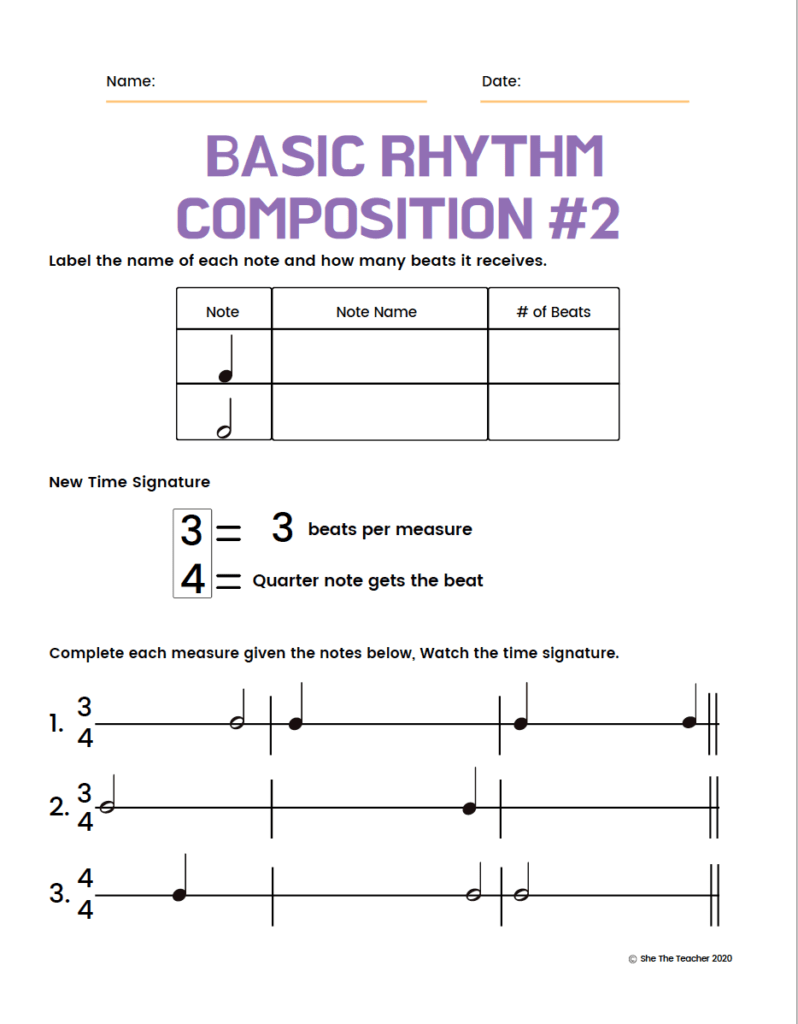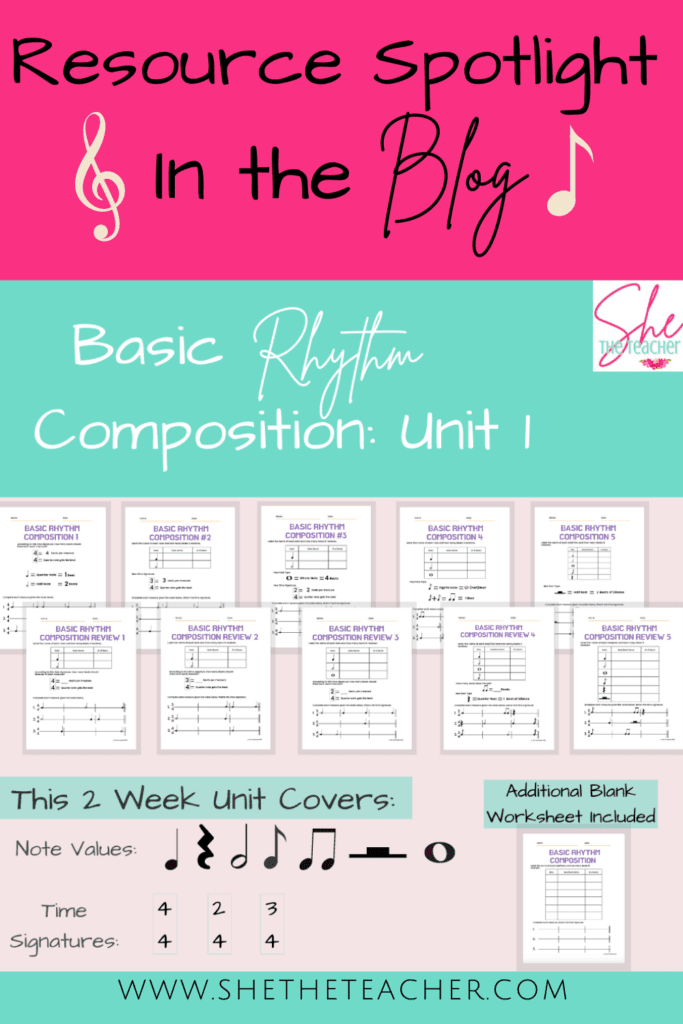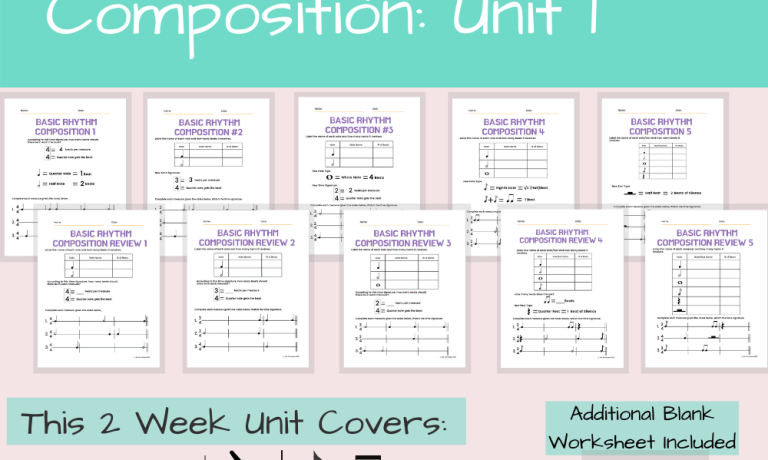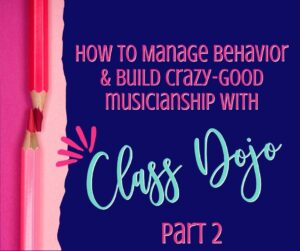In my Teachers Pay Teachers shop today, I debuted the first of multiple rhythmic composition units that I hope will be helpful to other teachers in covering music theory. Each one of these beginner music theory worksheets is introduced with one or two pieces of new material which are then reviewed with a follow-up lesson the following day or class time.
Background:
I love teaching music theory basics to my students and watching them truly understanding what it means to write music using its language. It’s inspiring to see those “aha moment” when they really get how rhythm and melody intertwine to form songs.
But I hated composition because it always felt like pulling teeth to get students to follow all of the rules of music theory. It’s hard to make following rules fun when the rules themselves feel very tedious to students. Due to that, composition “projects” and music theory worksheets often were turned in as entire page of whole and half notes because if you can write one note that equals four beats, why on earth would you write a whole bunch of 5 or 6 notes that also equal four beats.
I get you, child. I see what you’re doing there. But, not so fast.
I knew I could get them on my side. I just needed a sequence that didn’t suck.
Music Theory Worksheets: A New Resource
Let’s take a look at one of the lessons from the system as an example:

Every daily worksheet has a different pattern of pre-filled notes covering multiple time signatures. There’s a reason for this. When I’ve taught composition basics before, the first major hiccup or brain block my students have in composition is just putting down SOMETHING onto their music theory worksheets. I got so used to hearing, “I don’t know where to start! What do I do?”
Well this takes away that question. Instead of giving students a blank line and asking them to fill it up with a combination of notes that fill up a measure in a given time signature (which is super overwhelming for beginners), we give them a puzzle. The puzzle is: given a note or two in a measure, how much space do you have left and what could you put in there to fill it up?
It takes away the stress of doing everything alone and instead gives them “hacks” along the way. Kids love hacking the system! 🙂
My hope is that by making a composition system that encourages active thinking (and not the auto-pilot, “I’ll just blow through it to get it done” mentality that students often utilize) will make these short lessons easy to tackle and take up less time in class.
There are 10 sequential lessons in this series, followed by a pre-made, blank page for continued practice or a final exam/quiz.
Rhythmic Composition & Music Theory Worksheets: The Sequence
Unit 1 Rhythmic Composition & Music Theory worksheets cover these composition basics: time signatures (2/4, 3/4, & 4/4) as well as note values (eighth note, beamed eighth notes, quarter note, quarter rest, half note, half rest, whole note).
- Day 1: 4/4 Time Signature, Half Note, Quarter Note
- Day 2: Review/ Additional Practice Worksheet
- Day 3: Add in 3/4 Time Signature
- Day 4: Review/ Additional Practice Worksheet
- Day 5: Add in Whole Note & 2/4 Time Signature
- Day 6: Review/ Additional Practice Worksheet
- Day 7: Add in Eighth Notes & Beamed Eighth Notes
- Day 8: Review/ Additional Practice Worksheet
- Day 9: Add in Quarter Rest & Half Rest
- Day 10: Review/ Additional Practice Worksheet
- Day 11: Blank Page Used for Additional Practice or Final Quiz/Exam
Going Forward
I’ll be releasing a bunch of music theory worksheets within several new rhythmic composition units in the several few weeks that will continue to cover music composition. My goal is to have 3 or 4 units that each line up with a melodic component so that teachers can choose to do either rhythm alone or rhythm and melody simultaneously.
Would you like to read more about what it means to be a great teacher? CLICK HERE
What would you like to see in a the next batch of music theory worksheets? Leave me a comment below!






